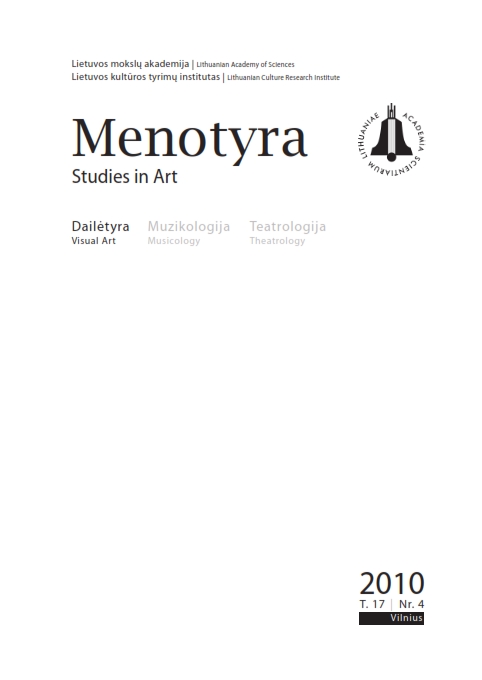Vilniaus vėlyvojo baroko vargondirbystės mokyklos vargonų prospektų puošybos raida
Decoration peculiarities of organ prospects of the Vilnius late baroque organ building school
Author(s): Girėnas PovilionisSubject(s): Christian Theology and Religion, Visual Arts, 18th Century, 19th Century
Published by: Lietuvos mokslų akademijos leidykla
Keywords: Lithuanian baroque and classicist organs; Vilnius late baroque organ building school; organ prospects; wood carving; ornamentation; Vilnius; Tytuvėnai; Troškūnai; Budslau; master Nicolaus Jantzon;
Summary/Abstract: The preserved organ prospects of Lithuania of the late baroque and classicist styles were decorated with ornamented wood carvings just like church altars, pulpits, and other elements of church interior. The ornamentation of Lithuanian church organs late in the 18th – early 19th century has not been investigated thoroughly by historiographers.The organ at the Vilnius Bernardine Church could be referred to as the prototype of the decoration of organ prospects of the Vilnius late baroque organ building school as it reveals the most widely spread iconography of plastic carving. The ornaments employed for the decoration of this particular organ were reiterated and supplemented with new motifs in subsequent prospects.Decoration tendencies of masters of the Vilnius school influenced works of provincial masters who, having adopted professional artistic trends, sometimes added certain ethnic elements. The architecture and wood ornamentation typical of the Vilnius organ masters allows identification of works built by the latter masters not only in current Lithuania, but also in more distant countries, e. g., in churches of present Latvia and Belarus. The organ prospects preserved in Lithuania and built by the masters of East Prussia and Courland differ from the Vilnius school not only in their architectural solutions, but also in wood carving ornamentation.Certain elements of organ prospects at the end of the 18th – beginning of the 19th century could be considered as the most representative ornamentation of the Vilnius school. Such elements may include the following: big side wings twisted into volutes; the ornamentation of the small wings (reminiscent of a sea horse), the grille covering the pipes, the console supporting the towers, and the escutcheons or cartouches crowning the top of a prospect; the symbol of the divine Eye; and the sculptural group showing two trumpeting angels and King David playing the harp. This is best reflected in the prospects of the organs of St. Joseph in Kėdainiai, Tytuvėnai, Šeduva, Tvera, Trakai, Seda, Vidsodis, and Lėnas.
Journal: Menotyra
- Issue Year: 17/2010
- Issue No: 4
- Page Range: 351-365
- Page Count: 15
- Language: Lithuanian

